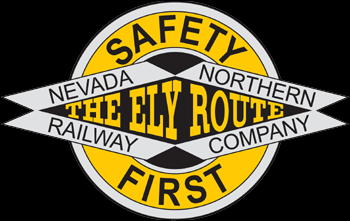
Every February, the Nevada Northern Railroad Museum in Ely, Nevada hosts a photo shoot featuring real live, fully operational steam breathing locomotives.
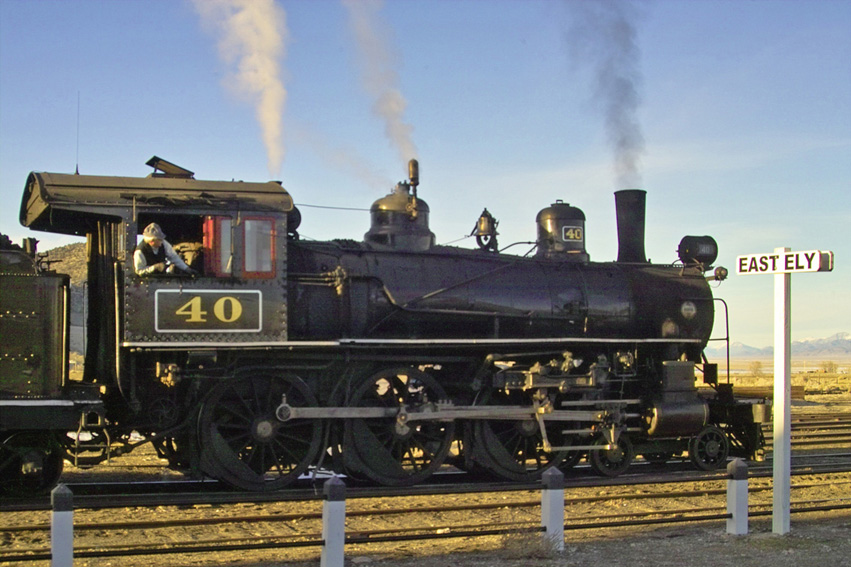
The photo shoot happens in February because the cold clear mountain air dramatically enhances the photographic effect of the steam from the locomotives. The town of Ely rests at an altitude of 6500 feet in the clear high desert air of Northern Nevada.
The morning of the first day of the Steam Spectacular, the temperature in Ely was five degrees Fahrenheit.
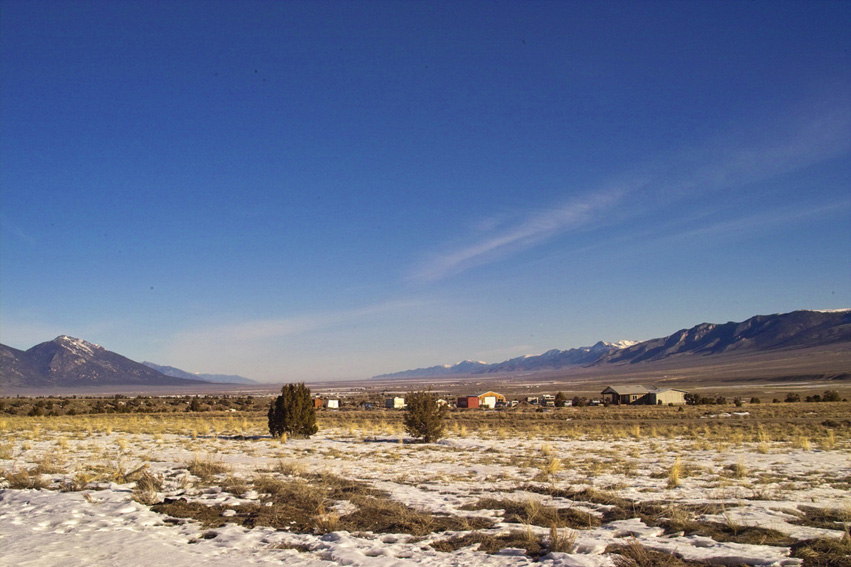
About the Nevada Northern Railroad
Circa 1902, Virginia City mining and railroad entrepreneur Mark Requa had found extensive copper deposits in the area west of Ely. Requa organized the White Pine Copper Company, which constructed the Nevada Northern rail route. In the Winter of 1904, Requa met in New York City with a reluctant E. H. Harriman, President of the Union Pacific and Southern Pacific Railroads. Requa convinced Harriman to allow Nevada Northern lines to connect with Southern Pacific rail routes at Cobre, 140 miles North of Ely.
In 1904 White Pine Copper Co. merged into other mining properties and organized as the Nevada Consolidated Copper Co. ( NCCCo). Later, Kennecott took over operation of NCCCo, as well as the Nevada Northern Railroad. The NNRR hauled ore to the smelter in nearby McGill, and provided passenger and freight service between Ely and the junction with Southern Pacific lines in Cobre.
Rolling Stock
Engine Number 40
Engine 40 was
built in 1910, and was used strictly in passenger service. She was
built for speed, as evidenced by how close to the drive wheel axles the
push rods are connected. Hauling passengers over the relatively flat
floor of the Great Basin between Ely and Cobre, Number 40 could attain
speeds of 70MPH.
Click
on image to see full sized image. Use the browser BACK button to return
to thumbnails.
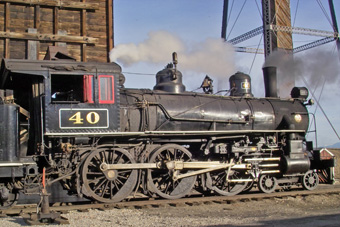
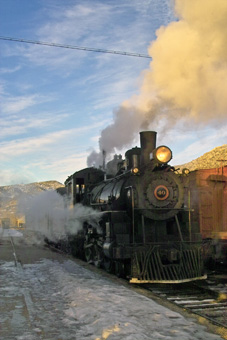
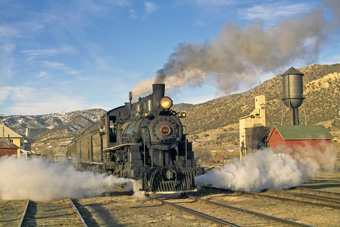
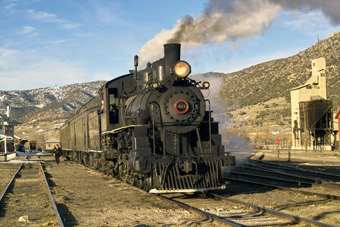
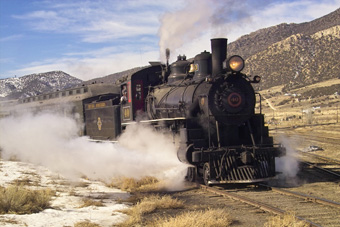
This final image demonstrates the down side of being built for speed - no low end torque. Number 40 was attempting to back up a minimal grade, and stalled with the push rods at dead center. The technical term for this is "stuck". The remedy is to divert full steam pressure to one drive piston then to the other, attempting to move the push rods off dead center. It works, but is extremely loud!
Engine Number 93
Engine 93 was built in 1909, and was strictly a freight hauler. Note how far out towards the perimeter of the driver wheels the push rods are connected. This is a torque machine!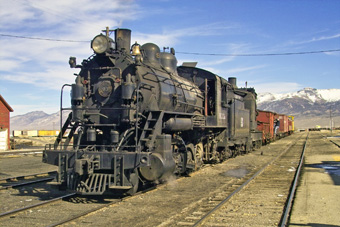
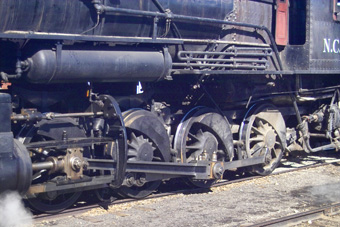
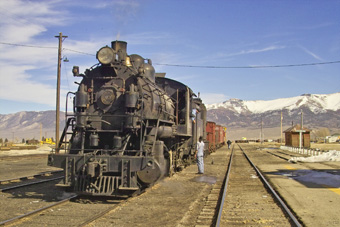
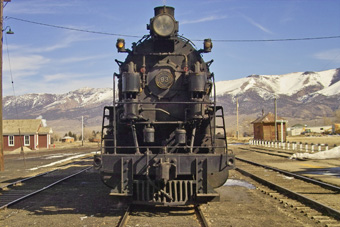
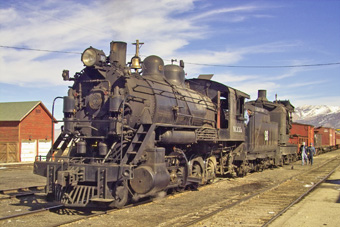

Conveyance
While out "on the line" we rode from photo op to photo op in various rolling stock. Including a couple caboose, a passenger car, and an "outfit car". The latter being a sort of RV for road crews working out on the line for several days at a time. All of these cars were built in the early 1900s except the KENNECOT caboose which was built in 1953.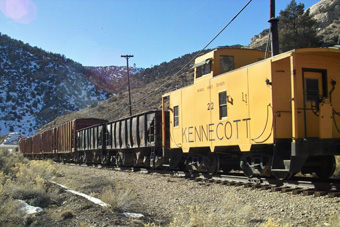
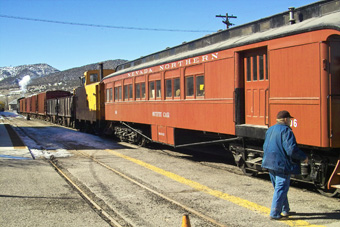
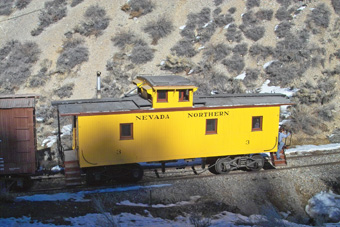
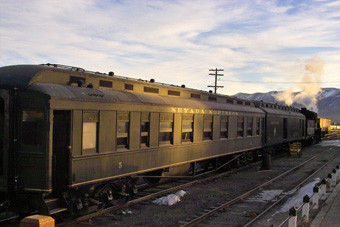





The word "WOMEN" on the wall of the passenger car denotes the women's section of the car. In the early 20th century, men and women were segregated on rail cars, as well as in the station waiting rooms. Today we would assume such segregation was to insulate the fairer sex from the obnoxious behavior of men. While that may have been partly the case, the main reason was to provide mothers traveling with children the privacy to nurse their infants.



Wrecking Crane
This steam powered wrecking crane was built in 1907. An ore car was deliberately derailed to provide an opportunity for us to see the crane in action. Note all the moving drive equipment the crane operator had to beware of.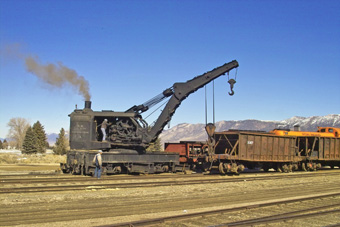
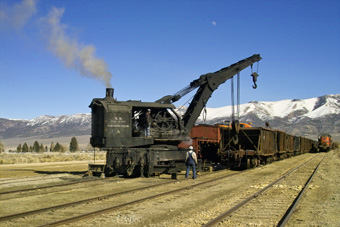
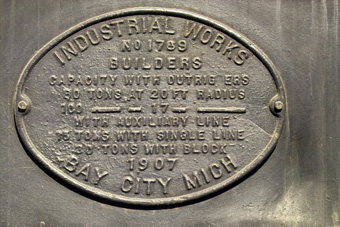


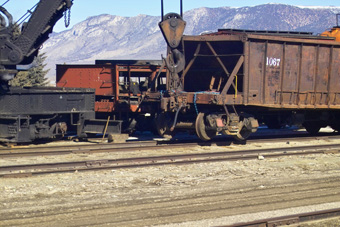
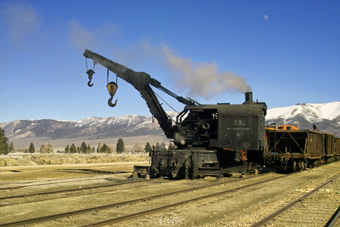



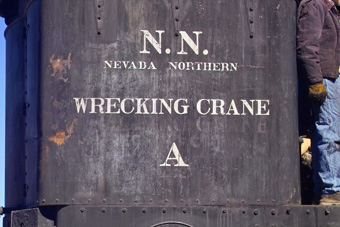


Diesel Locomotive
The NNRR "dieselized" in 1948. This is a 1950 vintage diesel locomotive.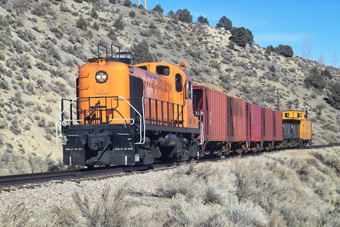


Misc.
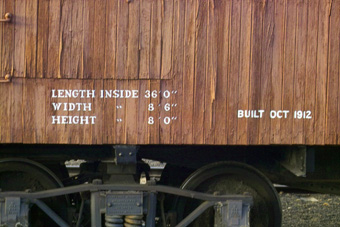

Coaling Station
The steam locomotives carry enough coal and water to operate for half a working day - about six hours. So a couple times a day they need to hit the coaling and watering station to take on about a ton of coal and six to seven thousand gallons of water. With sixty ore trains a day running between the Ruth Mining District and the smelter at McGill, plus the coal trains delivering coal from the Utah coal fields, this coaling tower was a busy place in the early 1900s.


The Crews
The museum staff working on train crews wore authentic period dress.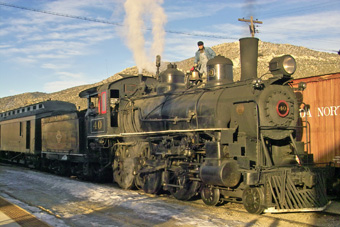
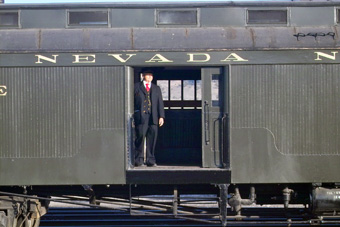
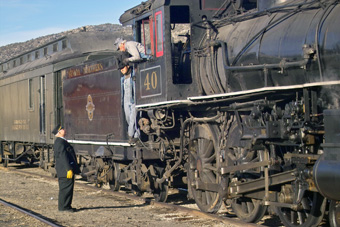
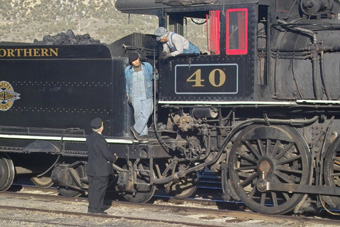
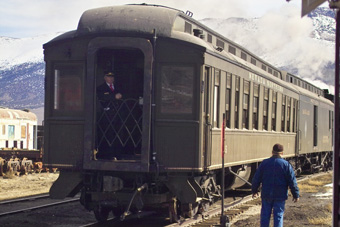
This was the early 1900s version of text messaging. The engineers and switch men exchanged orders and other communications in writing.
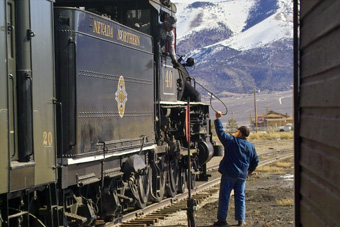
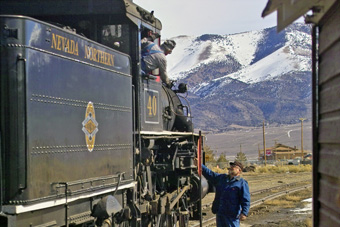
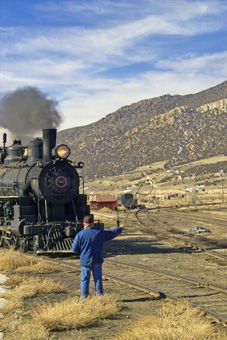
Imagine making an exchange like this with the train moving 50MPH.








Getting Out of the Barn
On a typically cold and clear morning, we had the opportunity photograph the engines pulling out of the engine house. It takes about four hours for the steam locomotives to build up an adequate head of steam to operate. The steam engine crews were in the engine house stoking the fires starting at around three in the morning. The diesel crew shows up at around 6:30 in the morning. They crank the diesel up with the electric starter, go have a cup of coffee while the engine gets up to operating temp, then they're ready to roll. And the cab of the diesel locomotive is heated.Click on image to see full sized image. Use the browser BACK button to return to thumbnails.
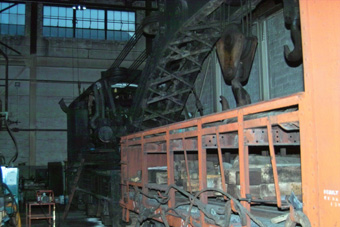
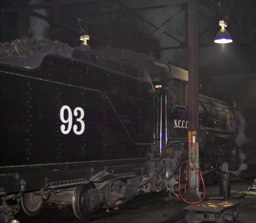
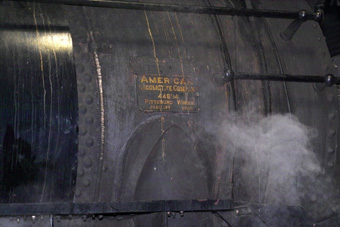
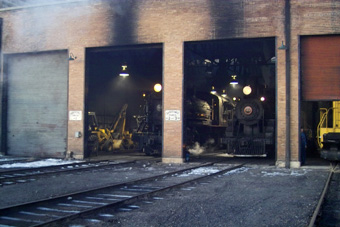
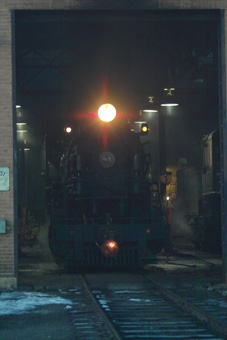
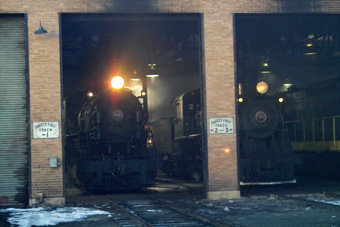

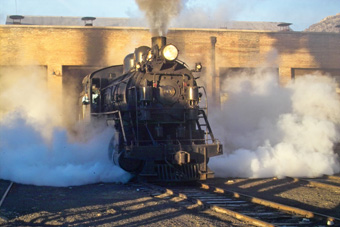
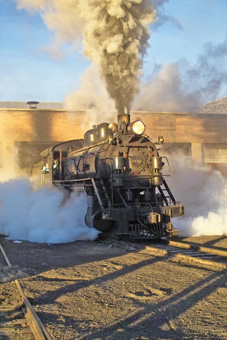
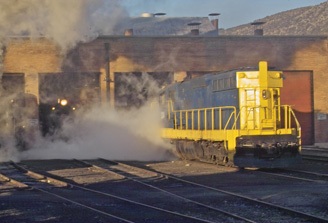
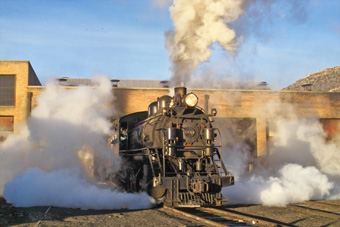
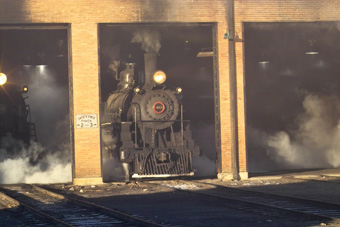
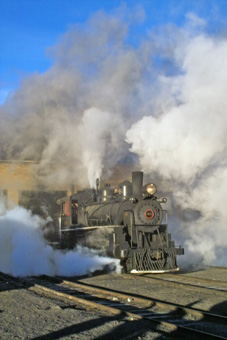
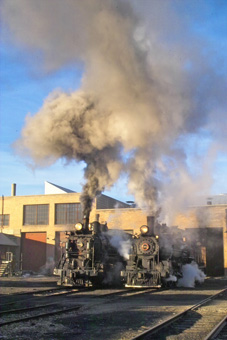
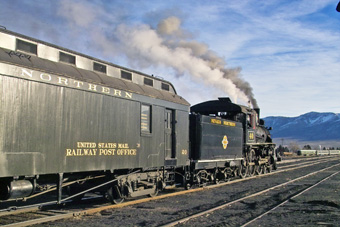
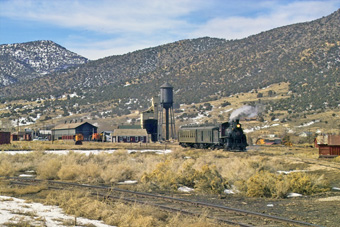














Photo
Collection
Click
on image to see full sized
image. Use the browser BACK button to return to thumbnails.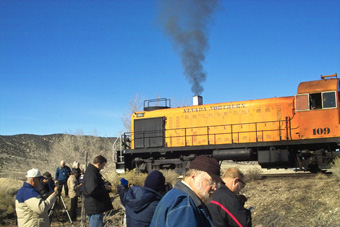
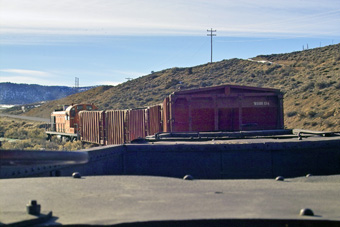
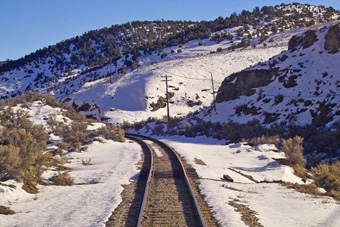
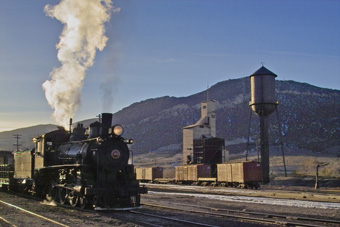
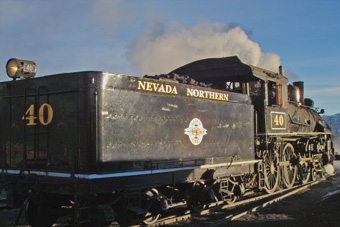
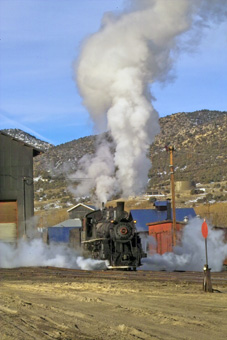

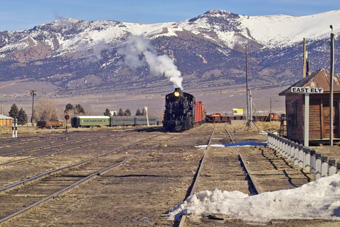
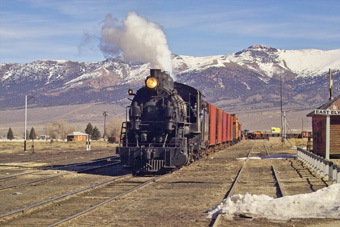
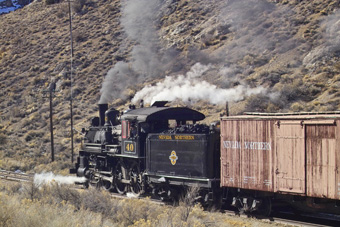
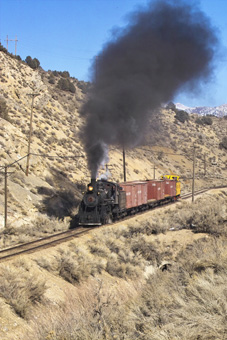
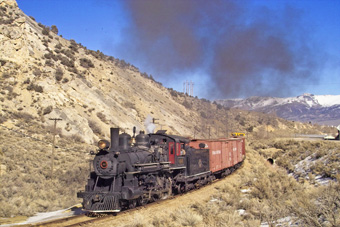
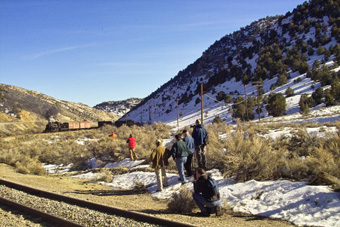
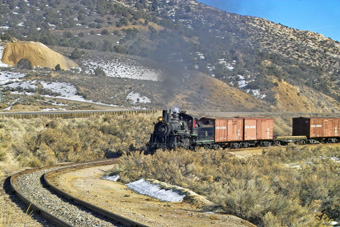
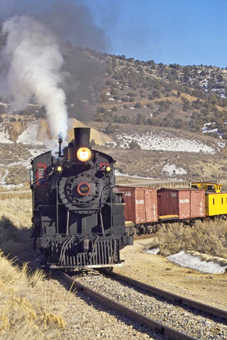

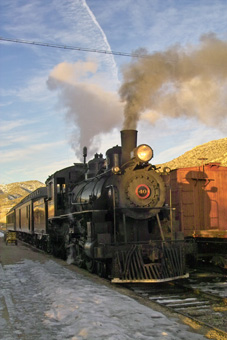
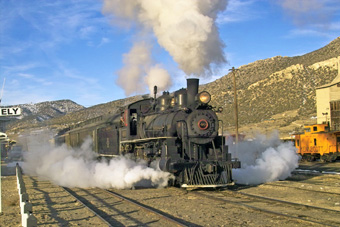
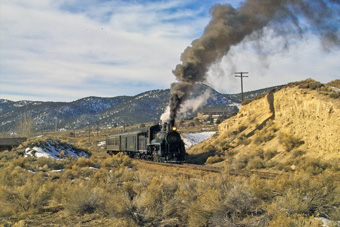
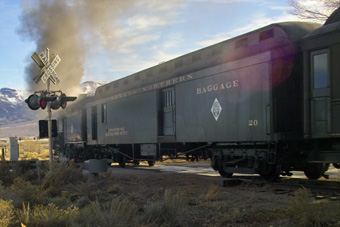
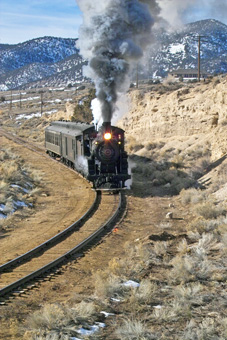
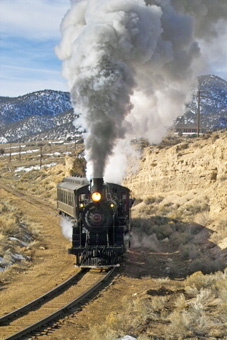

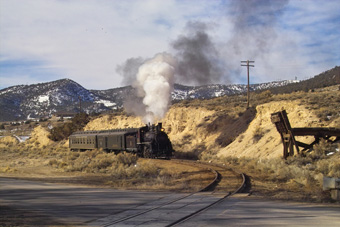
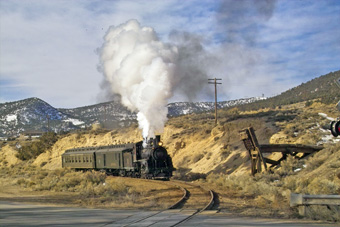
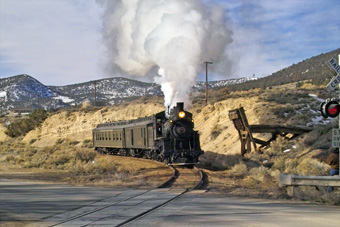























Train Stations
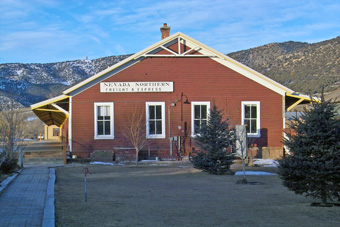
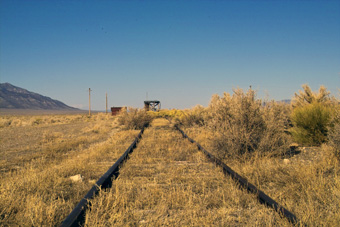
NNRR freight depot, and remnants of Cherry Creek Station.
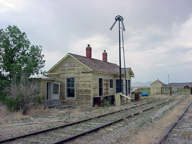
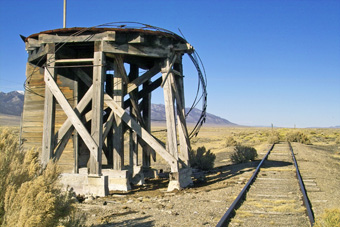
The depot at Currie, NV. The mid point between Ely and Cobre. All that remains at Cherry Creek Station is the base of the water tower. The town of Cherry Creek itself lies in the foothills seven miles to the West of the station site.
The End